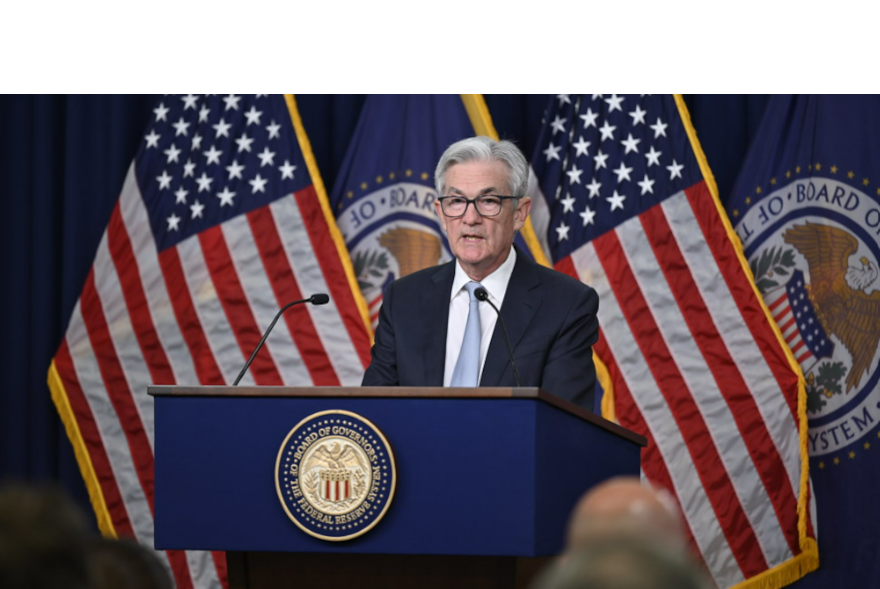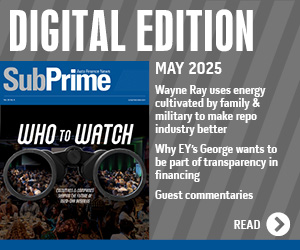Latest Fed move could push auto interest rates to levels not seen in 21 years

Federal Reserve chair Jerome Powell announced another rise in interest rates on Wednesday. Photo courtesy of the Federal Reserve.
Edmunds executive director of insights Jessica Caldwell and Cox Automotive chief economist Jonathan Smoke made comments before and after the Federal Reserve pushed interest rates higher again on Wednesday.
The latest 75-point rise pushed the year-to-date increase in the target rate to 375 basis points, which Smoke pointed out as the most in any single year since 1981.
Both Caldwell and Smoke arrived at the same assertions that subprime and other budget-constricted consumers are going to have the most difficult challenge in securing auto financing and maintaining monthly payments.
As many experts projected ahead of Wednesday’s announcement, Fed chair Jerome Powell made the move official that increased the target range for the federal funds rate to 3.75% to 4%.
According to Edmunds’ database, the average rate for used-vehicle financing booked in October was 9.6%, resulting in an average monthly payment of $564 when the average amount financed at time of origination was $30,707 for 70.8 months.
Among new models delivered last month, Edmunds reported the average figures to be a 6.3% interest rate for 70.1 months when $40,438 was financed, resulting in a monthly payment of $703.
“New-vehicle inventory might finally be improving, but the automotive industry is still on a long road to recovery because rising interest rates are creating a major barrier to entry for car shoppers,” Caldwell said. “Many consumers who have been sitting out of the market due to high prices and limited options will likely continue to do so over high interest rates.
“We saw new interest rates climb to similar levels in the early 2000s, but so much has changed in the market since then: the average price of a vehicle has risen dramatically, there are fewer smaller, budget-friendly vehicles for shoppers to choose from, and on top of that, consumers are paying more for everything else in their lives,” she continued.
“While affluent shoppers with ample cash in hand are unlikely to feel the pinch, it’s the most price-sensitive individuals in need of a reliable form of transportation who will be the most affected as these rate hikes continue,” Caldwell went on to say.
In his blog, Smoke on Cars, the Cox Automotive expert elaborated about the potential long-term implications of higher rates. Like Caldwell, Smoke said interest rates for auto financing will be at rates not attached to contracts since 2001, especially since another rise of 50 basis points is expected by the Fed before the year finishes.
“Beyond the growing risk of recession, this restrictive rate level has structural implications for financing-dependent sectors like auto and housing. As a result, living with restrictive rates for more than a few months will have long-term implications for the industry and the country,” said Smoke, who is among the speakers at Used Car Week, which begins on Nov. 14 in San Diego.
“As a result of higher rates, consumers who are most payment sensitive have been falling out of the market. We see that clearly in subprime and deep subprime consumers disappearing. We also see a corresponding rise in the share of higher-income consumers at the expense of lower-income consumers,” he continued.
Beyond what the Fed is doing, Smoke also touched on another element that’s making affordability an issue.
“Cash buying is also rising as consumers opt to pay cash instead of paying 8% or more on a new-vehicle loan or 12% or more on a used-vehicle loan. At historically high vehicle prices, cash buying is primarily an option for only the wealthy,” Smoke said.
“This has long-lasting implications for the vehicle market. Before the pandemic, the auto industry was already shifting towards more expensive vehicles with a move to more trucks, SUVs, and luxury vehicles at the expense of smaller, more affordable sedans. As the pandemic and supply chain issues then limited new-vehicle production, primarily the most profitable vehicles and the most expensive configurations have been produced. Now throw in restrictive rates for the foreseeable future and the industry must contend with a buying pool that will only reinforce a focus on wealthy consumers,” he said.
“The used-vehicle market offers no affordable refuge. Since yesterday’s new market supplies the used market, affordable alternatives will also be limited. Like the new market, with the rate moves this year, the used-vehicle market is starting to see similar shifts in buyers, with higher-income consumers gaining share and subprime increasingly being priced out,” Smoke said.
Meanwhile, Powell reiterated that the Fed is focused on reducing inflation despite the potential ramifications Caldwell and Smoke articulated.
“The Fed’s monetary policy actions are guided by our mandate to promote maximum employment and stable prices for the American people. My colleagues and I are acutely aware that high inflation imposes significant hardship as it erodes purchasing power, especially for those least able to meet the higher costs of essentials like food, housing, and transportation. We are highly attentive to the risks that high inflation poses to both sides of our mandate, and we are strongly committed to returning inflation to our 2 percent objective,” Powell said on Wednesday.
“Financial conditions have tightened significantly in response to our policy actions, and we are seeing the effects on demand in the most interest-rate-sensitive sectors of the economy, such as housing. It will take time, however, for the full effects of monetary restraint to be realized, especially on inflation,” he continued.
“We are taking forceful steps to moderate demand so that it comes into better alignment with supply. Our overarching focus is using our tools to bring inflation back down to our 2 percent goal and to keep longer-term inflation expectations well anchored. Reducing inflation is likely to require a sustained period of below-trend growth and some softening of labor market conditions. Restoring price stability is essential to set the stage for achieving maximum employment and stable prices in the longer run. The historical record cautions strongly against prematurely loosening policy. We will stay the course, until the job is done,” Powell said.


